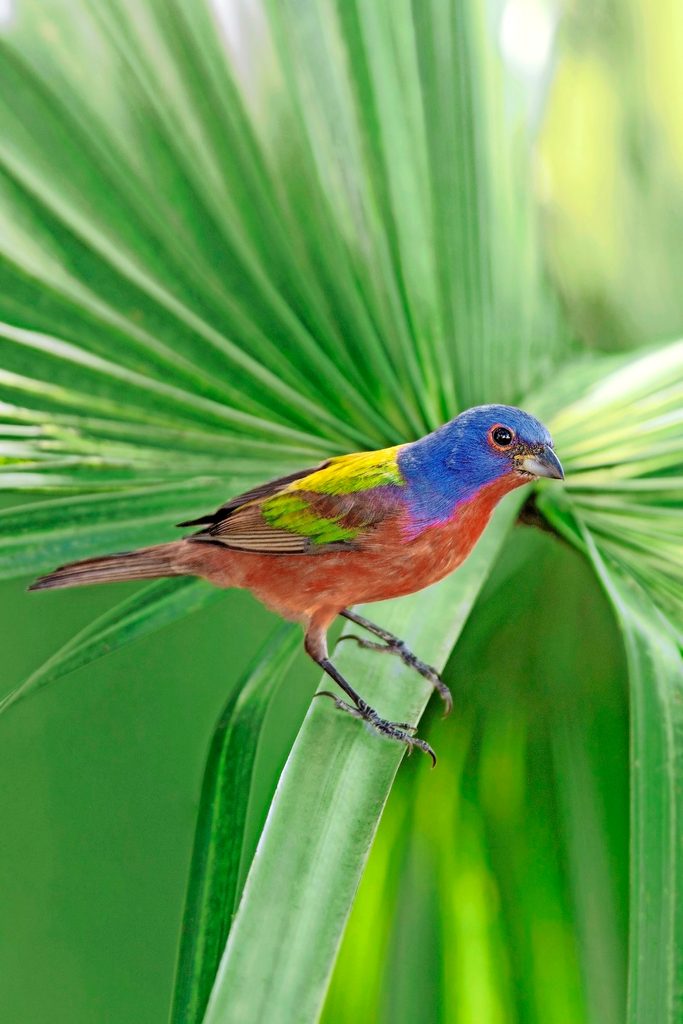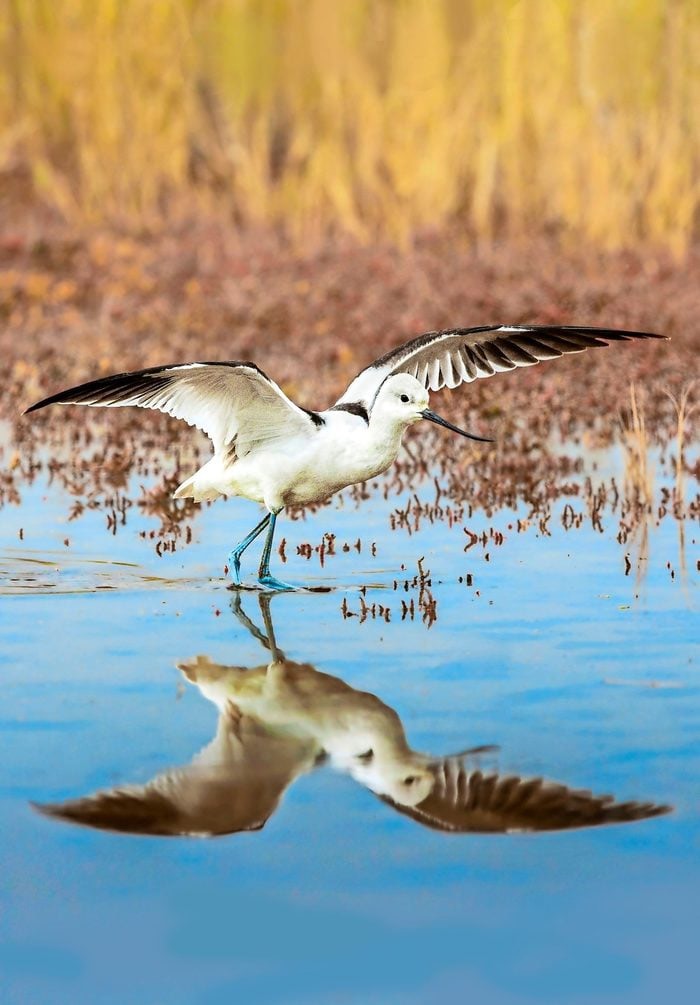
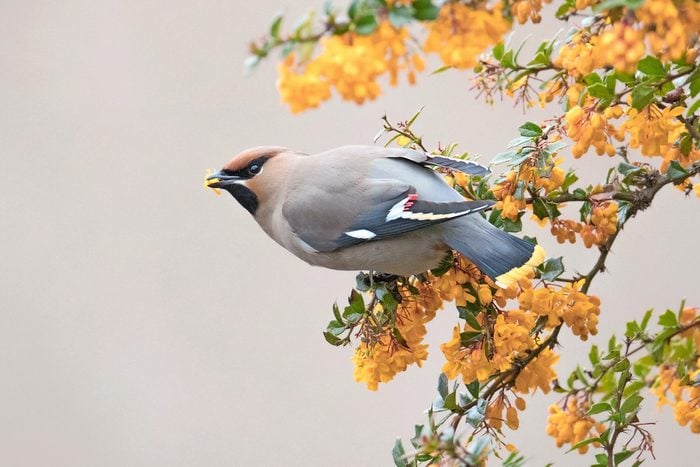
Waxwings have a soft appearance, almost as if they just escaped from a watercolor painting. Bohemian waxwings roam south to eat fruits and berries in wintertime, sometimes commingling with flocks of cedar waxwings. The waxy red wingtips and yellow tips on their tail feathers are colored by carotenoids, which are pigments found in fruits the birds consume. Rusty undertail coverts and rich hues along the head help distinguish Bohemians from their more familiar counterparts.
Next, check out the cutest birds in America.
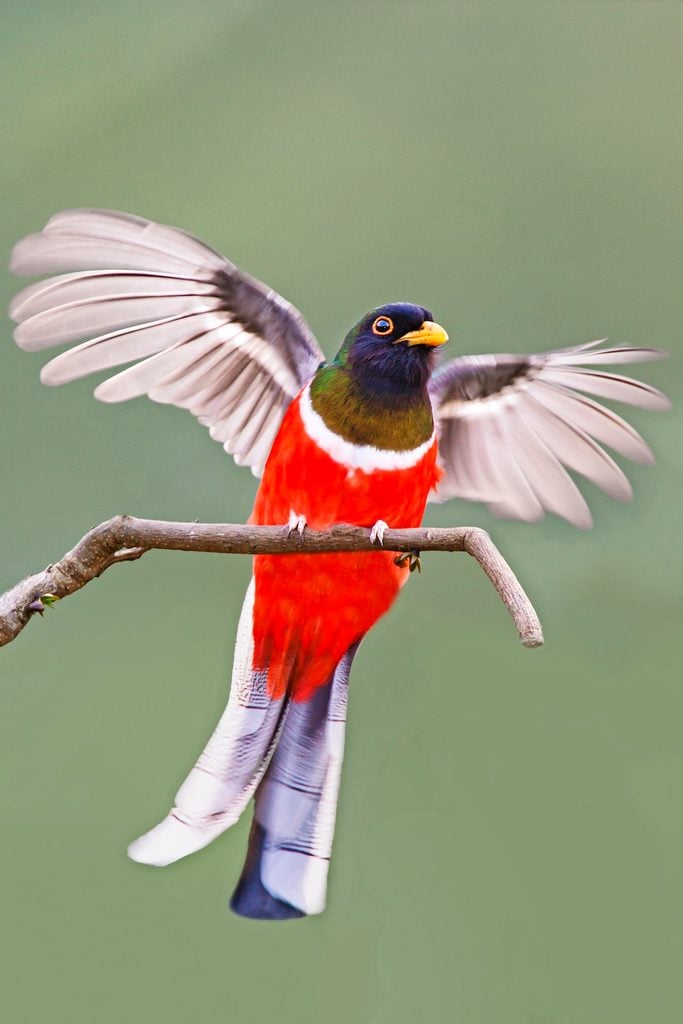
Although trogons are a family of tropical birds found mostly south of the U.S. border, elegant trogons have a very limited range in the United States. They are worth seeking out in the wooded canyons of southern Arizona. Distinct white chest bands offset their brilliant pink bellies and festive green heads. Long tails and portly bodies also help them stand out. Elegant trogons are secondary cavity nesters, meaning they take over and create homes in holes excavated by woodpeckers.
Discover the best bird-watching hotspots across America for every season.
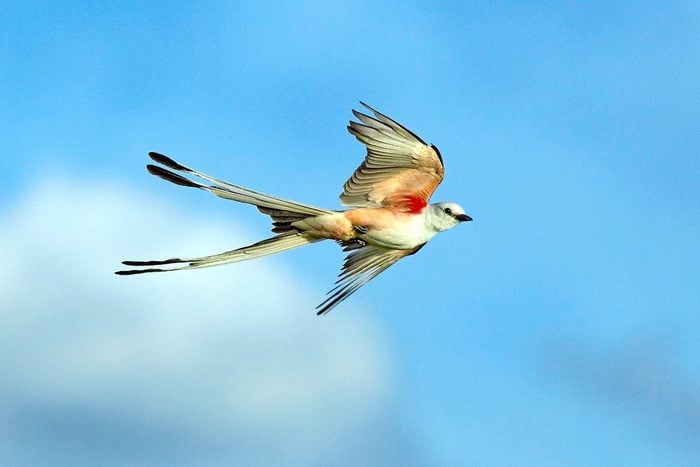
A long split tail gives Oklahoma’s state bird a very distinct silhouette. Its salmon-colored shoulders and underwings stand out in flight. Like the closely related kingbirds, this species is often observed on open perches, ready to fly out to snag any insects in midflight. While the core breeding range is in the south-central United States, individual scissor-tailed flycatchers have been known to show up in other locations around the country.
Can you guess the official state bird of all 50 states?

When it comes to ducks, this species is a strong candidate for the most dapper. The iridescent sheen of the crested head of the male is simply stunning. While the males are easy to spot for much of the year, they do molt into brown feathers for a short period in late summer. During this eclipse plumage, they are camouflaged when resting and closely resemble female wood ducks. Even while they are in this muted pattern, males maintain their bright red eyes and bills.
Check out 7 types of ducks to look for in spring migration.
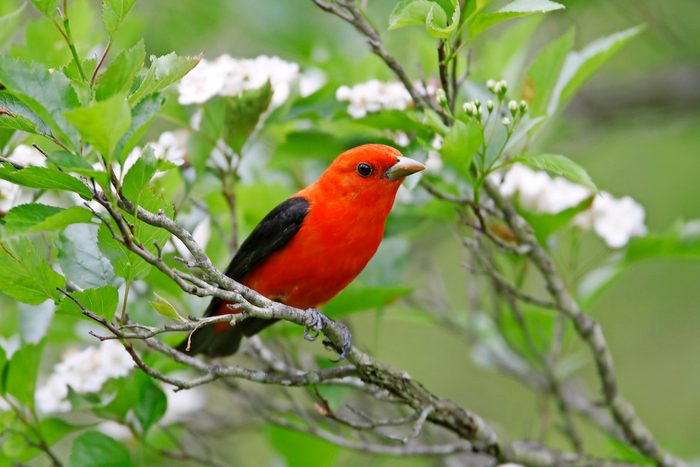
Simply stunning, tanagers are usually spotted in the forest canopies in the eastern United States. They can occasionally be coaxed into backyards with nectar, suet, mealworm or jelly feeders. Tanagers and orioles both love jelly! Their fairly thick bills are used for eating insects and fruits. Male scarlet tanagers have dark wings and tails with bright red bodies, while females and immature birds are a greenish tone. The scarlet tanager’s song is sometimes described as sounding like a sore-throated robin.
Learn 8 surprising facts about tanagers.
Another exotic-looking bird that occasionally visits feeders in the southern United States is the painted bunting. Males wear a rainbow of colors, while females are a vivid greenish yellow. Despite their brightness, buntings can be difficult to spot since they prefer dense thickets. If you hope to host painted puntings in your yard, providing good cover habitat is as helpful as having bird feeders.
These are the 10 types of bird feeders you need in your backyard.
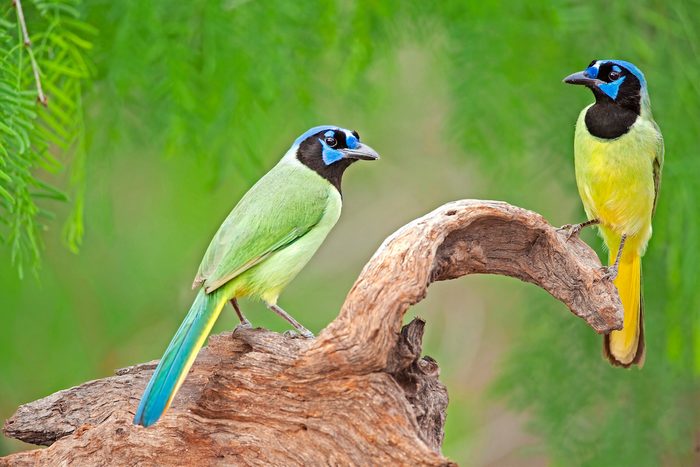
Green jays bring tropical flair to the Lower Rio Grande Valley at the southern tip of Texas. Platform feeders entice these vibrant fliers. A bit cartoonish with greens, yellows, black and blues, the birds have black Groucho Marx eyebrows that give them extra character. If a trip to south Texas isn’t in your immediate future, stream the feeder camera of the Sabal Palm Sanctuary to try to spot a green jay.
Here’s the best way to attract birds that avoid bird feeders.

Spotting a great blue heron, a species that is widespread but never overly abundant, always feels like a treat. These regal birds fly with a majestic fluidity and look stately as they stand along the water’s edge. With a lightning-fast strike, herons easily nab fish or frogs for a meal. Perhaps the one part of the great blue heron that’s not as beautiful is its call. The rough squawk has a guttural, almost prehistoric sound to it.
Learn more about the herons and egrets found across North America.
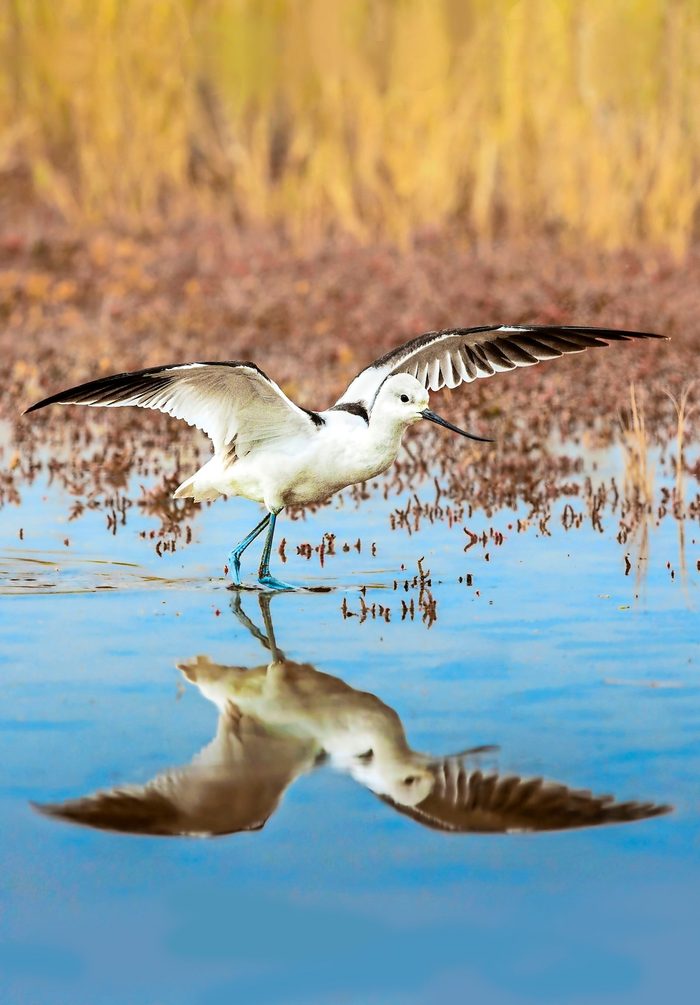
The American avocet’s stiltlike legs and long, thin and slightly upturned bill give it a sense of gracefulness. The crisp black-and-white coloration of immature and nonbreeding adults is accented by rich, rusty peach hues along the head and neck of breeding birds. Mainly a species of the West, they nest along open bodies of water. While foraging, avocets swish their bills back and forth in the water in a technique known as scything.
Think you know your shorebirds? Take a shorebirds pop quiz!
Originally Published: September 19, 2020


